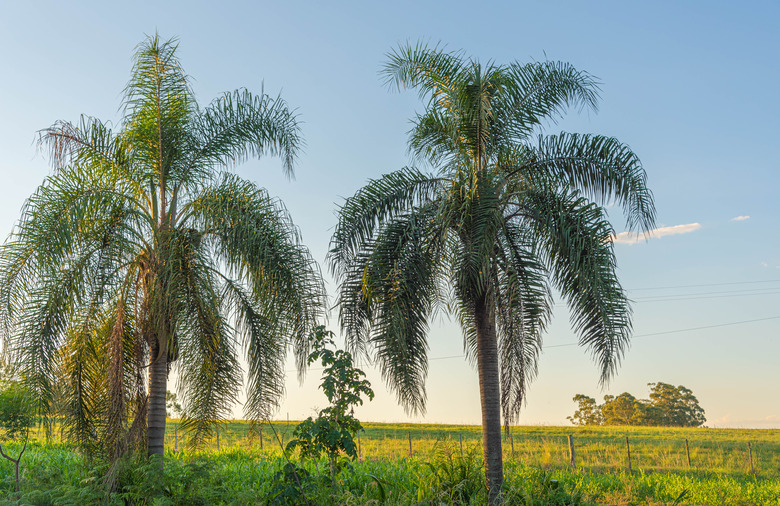How To Trim Queen Palm Tree Trunks
We may receive a commission on purchases made from links.
For a queen palm (Syagrus romanzoffiana, U.S. Department of Agriculture plant hardiness zones 10 and 11), pruning is essential for keeping it attractive and encouraging healthy growth. Palm pruning usually refers to trimming dead leaves or fronds from the trunk, although trimming a palm tree's trunk can cause problems if it's not done properly. Understanding when and how to trim queen palm trunks can help ensure that you don't damage your tree.
About Queen Palm Trunks
About Queen Palm Trunks
Queen palm trees grow vertically, with new leaves sprouting from above as the trees get taller. When the old leaves die, the leaf base becomes part of the tree's trunk, which is what causes the scarred pattern that's typical of palms.
Unlike other types of palms, though, queen palms don't shed their dead leaves efficiently, which can lead to a buildup of dead leaves and leaf stems. To keep your queen palm looking neat and tidy as it grows, you'll need to give it an occasional trim.
When to Trim Queen Palms
When to Trim Queen Palms
Avoid pruning your queen palm in winter; it's best to wait until spring, according to Green Keeper Tree Care. It's also important not to overdo it, as any trimming or other activity that opens the trunk's surface can be risky. An open trunk leaves your palm susceptible to diseases, from which it may be difficult for your tree to recover.
Removing dead fronds from a queen palm is important for several reasons. Not only can they be problematic during storms, but they also can be a fire hazard in addition to providing shelter for rodents and other pests. If you have concerns about falling fruit, you should plan to remove flower and fruit stalks at the same time you're trimming off dead fronds.
How to Trim Queen Palm Trunks
How to Trim Queen Palm Trunks
Take your safety into account when you're trimming a queen palm or any other type of plant. Safety gear, like gardening gloves and goggles, can be helpful in protecting your hands and eyes. You must also protect the safety of your tree by sanitizing the blades of your cutting tools to help prevent the spread of disease. You can do this by thoroughly cleaning your tools and then dipping their blades in rubbing alcohol, which doesn't need to be rinsed off prior to use.
Select fronds that are clearly dead; that is, brown all the way to their bases with no green or hanging at an angle below horizontal. These are the two best indicators that a frond is ready to be removed. Cut the frond parallel to the queen palm's trunk and no closer than 2 to 3 inches from the trunk, as incisions are unlikely to heal and can be an entry point for diseases and insects.
You can trim the dead leaves using hand tools such as a lopper or a pruning saw. It's best to trim only a few fronds at a time, as pruning too much in one session can stress your tree. Remember that evenly spaced leaf scars are a natural feature of a queen palm and can't be trimmed away without harming your tree.
References
- University of Florida IFAS Extension: Syagrus romanzoffiana: Queen Palm
- University of Florida IFAS Gardening Solutions: Disinfecting Your Garden Tools
- Clemson Cooperative Extension: Palms & Cycads
- Better Homes & Gardens: Queen Palm Tree
- Sun Palm Trees: Palm Tree Pruning
- University of Florida: Queen Palm Care
- Moon Valley Nurseries: Queen Palm Care Guide
